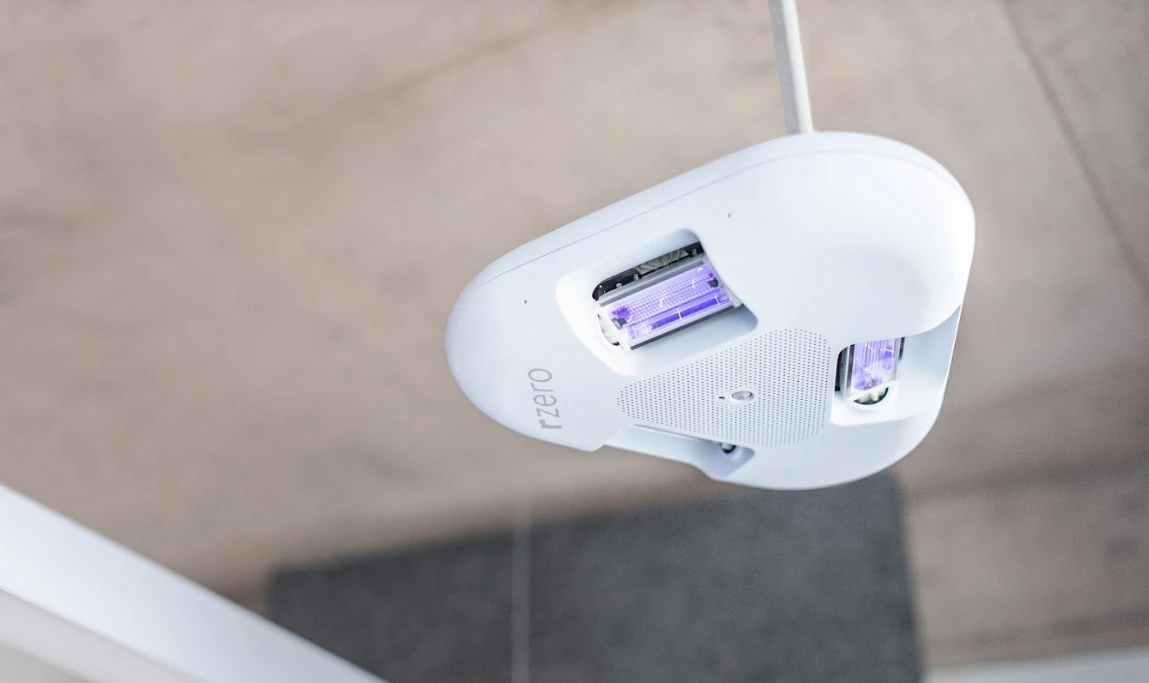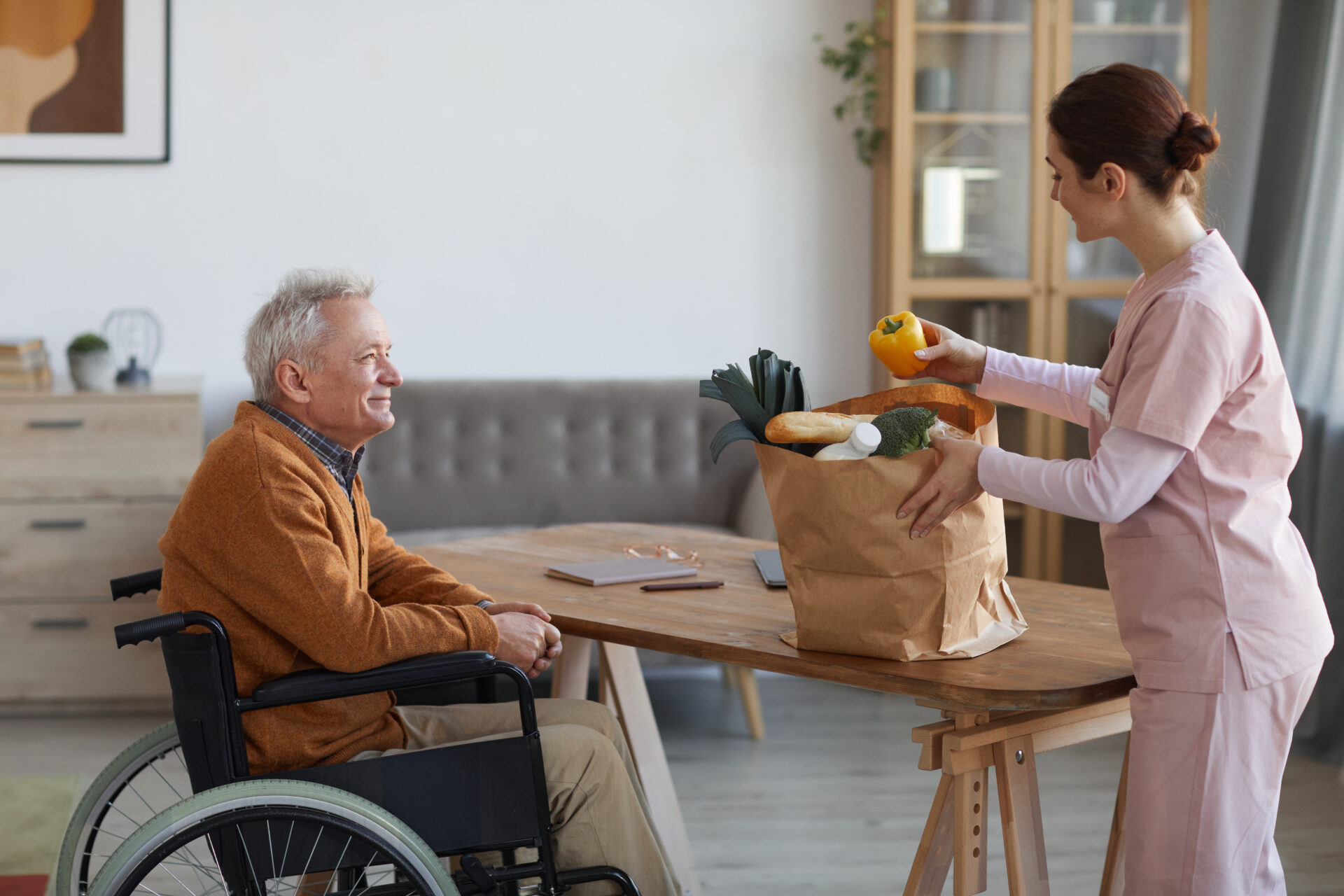
What is Far-UV?
With ASHRAE’s new standards for maintaining clean indoor air, UV-C light is quickly becoming a leading method in deactivating microorganisms effectively and affordably.
Constantly running an HVAC system to cycle in clean air has significant energy and financial costs, but cleaning the air in place with the power of UV-C light has the same effect at significantly less cost.
Of the types of UV-C light, far-UV is unique due to its safety for human exposure. Here’s what that means for a modern approach to disinfection:
Disinfection with UV Light
Falling on the electromagnetic spectrum between visible light and X-rays, the human eye can’t perceive UV-C light. We never needed to see it, because UV-C light doesn’t appear naturally on Earth. The Sun generates UV-C light, but it is absorbed by the atmosphere and doesn’t reach Earth’s surface.
However, we have been studying it since 1903, and scientists have found that UV-C light has germ-killing properties. The lack of naturally occurring UV-C light means that microorganisms like COVID and influenza have no natural immunity to this light. UV-C light penetrates their cells and destroys the nucleic acid present in their cells. By disrupting their DNA, UV-C light destroys their reproductive ability.
What Makes Far-UV Light Special?
UV-C encompasses a range of wavelengths on the light spectrum, some of which pose risks to human health. However, among these wavelengths, there exists a type of UV-C known as far-UV, which is entirely safe for human exposure. Far-UV light, with a wavelength of 222 nanometers, cannot penetrate human skin or eyes, making sure that it has no adverse effects on humans.
A recent comprehensive analysis of more than 100 research papers on far-UV disinfection confirms its remarkable efficacy against all pathogens while highlighting its harmlessness to human skin and eyes. With this proven safety record, far-UV light can be applied in occupied spaces to effectively inactivate airborne and surface-borne pathogens without posing any risk to humans.
A 2022 study by US and UK-based scientists found that far-UV rapidly reduces the amount of active microbes in indoor air, making its safety comparable to outdoor air. Even when microbes were continually introduced into the room, the overall microbe level remained low as far-UV light inactivated them when they entered.
Due to the way that far-UV enters and inactivates microorganisms, they won’t have the chance to become resistant to UV light. This method is effective on current microorganisms and will still be effective when future disease variants emerge.
R-Zero’s Far-UV Devices
Vive
Vive is an always-on far-UV disinfection device that protects high-risk spaces with over 99% air and surface disinfection. Vive works when the room is occupied or vacant, maintaining a clean and safe environment throughout the day. Not only does Vive provide disinfection, it also allows you to meet your sustainability goals with 65% less energy costs and 85% fewer greenhouse gas emissions when compared to traditional HVAC systems.
Eon
If you are looking for a solution for a small, enclosed, high-risk space, Eon houses one filtered far-UV bulb that lasts for over 10,000 hours. Eon devices efficiently disinfect an area of 100 square feet and are quiet as they operate in the background.
Disinfect Occupied Spaces with Far-UV
Far-UV devices allow you to maintain high-quality indoor air and reduce target microbes, without extra expensive or time-consuming disinfection efforts.
Are you ready to learn more about what far-UV lights can do for your space? Contact us today to find out how we can meet your air quality needs.
More posts you might like
-

The evolution of workplace experience and design: 4 trends shaping the future of office spaces in 2024
As workplace standards evolve, office design must adapt to new expectations around hybrid work and sustainability. JLL’s recent U.S. and Canada Design Trends and Cost Guide highlights key shifts shaping the future of office spaces. Workplace experience trend 1: Human-led design Workspaces are being reimagined to support both collaborative and focused work. The emphasis is […]
-

Embracing the Future of Buildings with BOMA’s 2024 Office Standard
The Building Owners and Managers Association (BOMA) Office Standard is a strategic tool that empowers property managers, owners, and tenants to navigate the complexities of the commercial real estate market. Used to compute the floor area in and around office buildings and updated to reflect the changing needs of the CRE market, the BOMA Office […]
-

The Importance of Improving Indoor Air Quality in Senior Care Facilities
With the increasing number of wildfires happening across North America every year, providing optimal indoor air quality in senior living facilities has never been more essential. Last year, wildfire smoke affected 120 million people in Canada and the United States, triggering air quality alerts across these regions. Seniors are particularly vulnerable to poor air quality […]